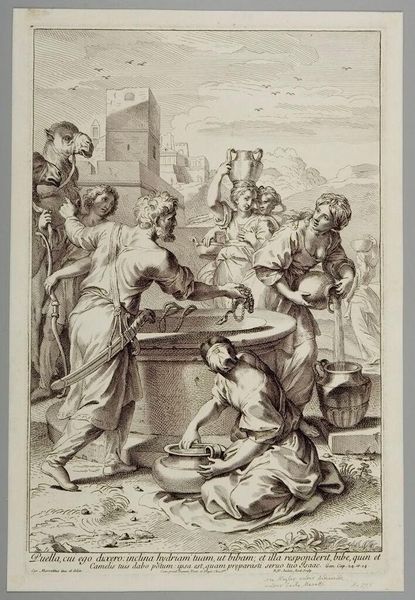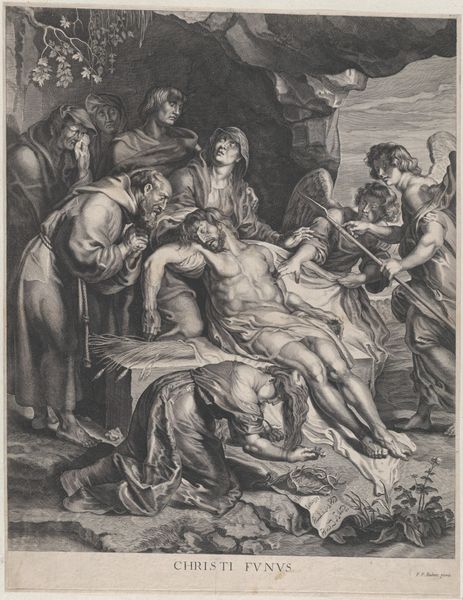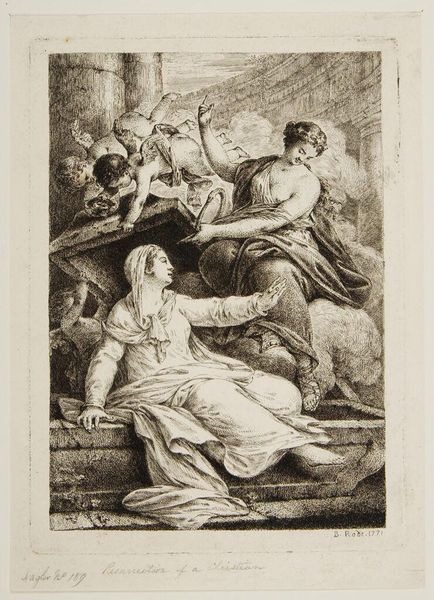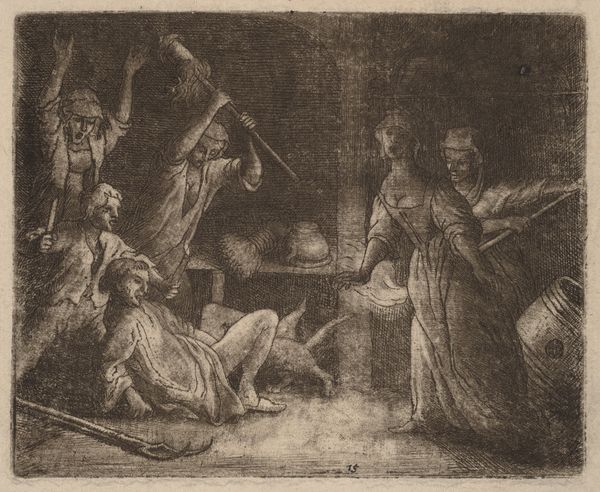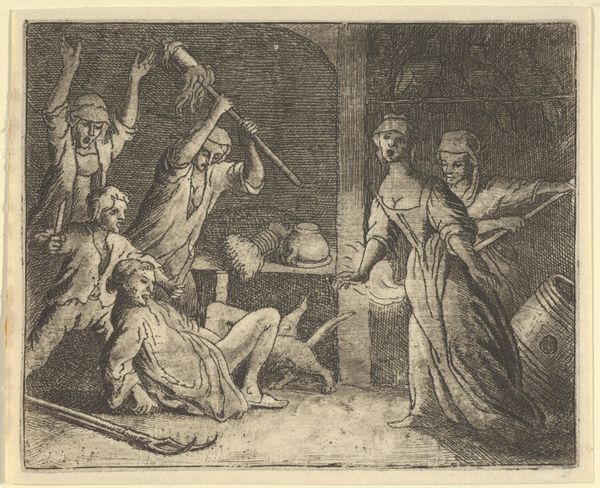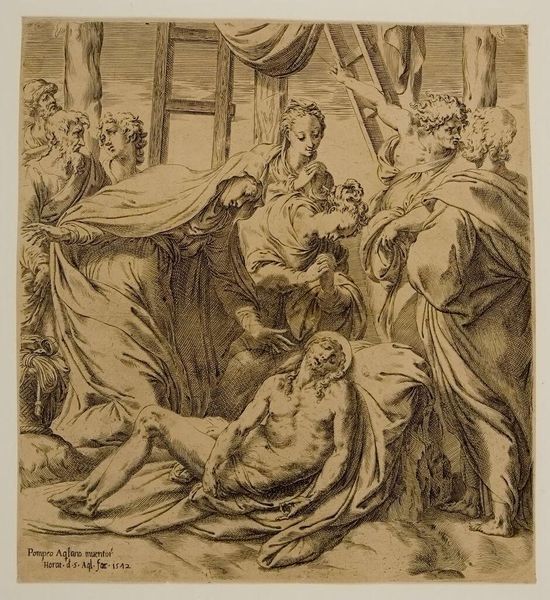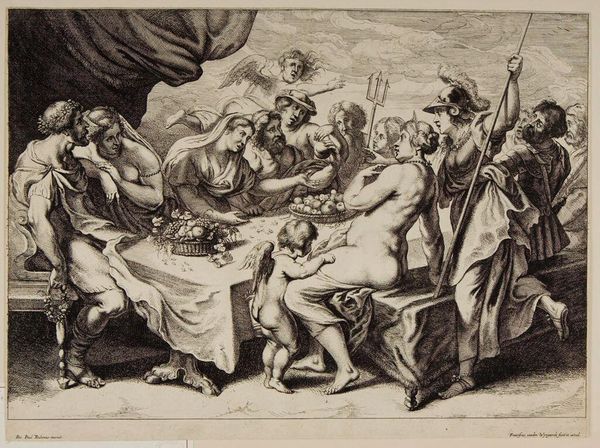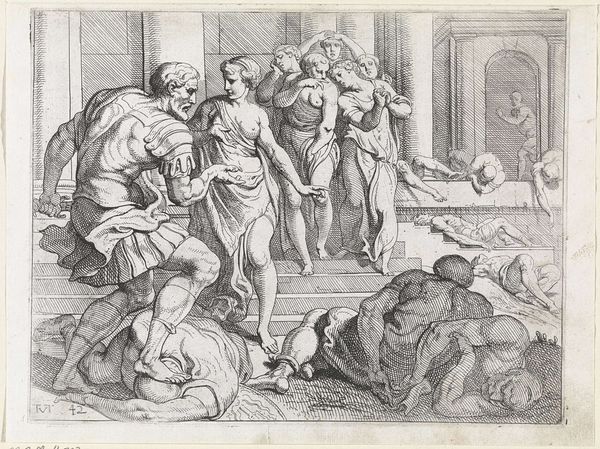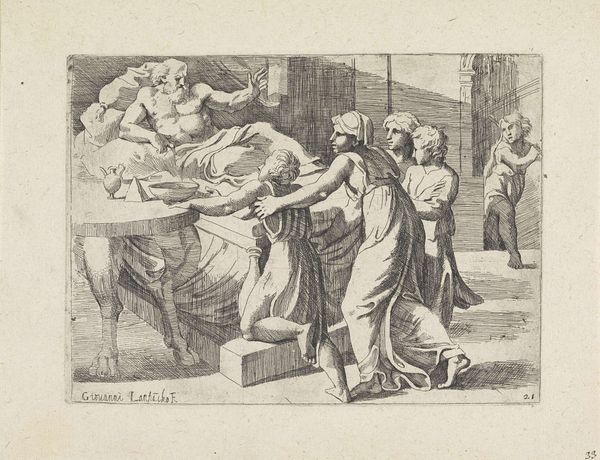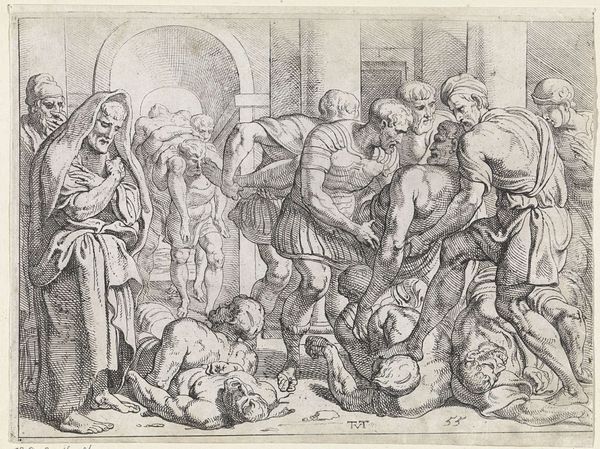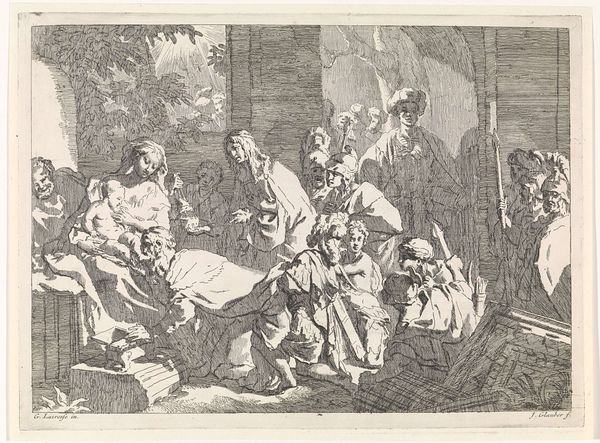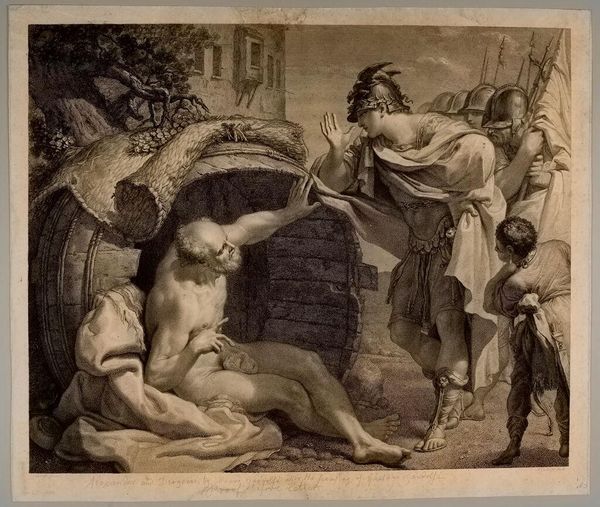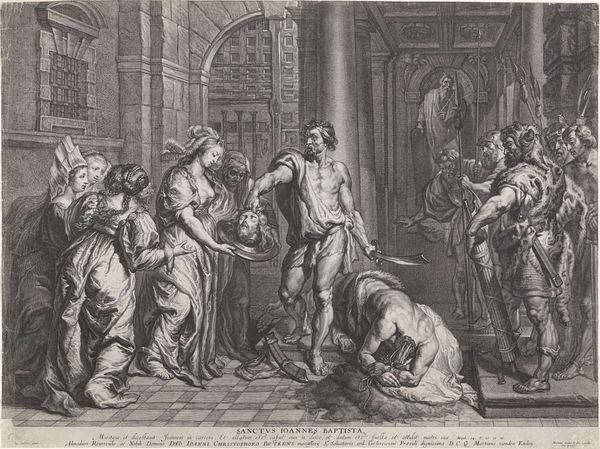
drawing, paper, pencil
drawing
allegory
narrative-art
paper
classicism
pencil
chiaroscuro
history-painting
academic-art
nude
Copyright: Public domain
Curator: Here we see an evocative pencil drawing, “Death of Cato of Utica,” attributed to Pierre-Narcisse Guerin. It’s a stark depiction, employing dramatic chiaroscuro, wouldn't you say? Editor: It does have an immediate visceral impact. The frantic energy around the central figure practically leaps off the paper. The rough, almost unfinished quality of the lines lends a certain immediacy to the scene. I'm curious about the paper used for this piece and where he was sourcing such material from at the time. Curator: Well, let’s consider the narrative it presents. Cato's suicide, rather than submit to Caesar, was highly symbolic. In the context of 18th- and 19th-century revolutions and the fight for liberty, he represents a martyr to republican ideals and an assertion of personal and political autonomy. A powerful stance. Editor: True. But thinking about the materiality here, the choice of pencil on paper feels… almost democratic? Unlike grand history paintings with oils, there is an accessibiliy to pencil sketches as the work relies less on the expense and labor of formal studio painting. And you have to ask, how does that inform the reception? Was this meant for wider circulation? Curator: Intriguing question. The choice also channels something rawer. The nude figure central in this historical tableau draws on long-standing conventions for conveying pathos, yet challenges notions of virtuous death by presenting something more agonized and visceral than idealized heroism. Editor: And beyond Cato himself, observe the flurry of activity! Consider the labor and craft needed to convey this chaotic scene using such meager tools— just paper and pencil—reveals to me that the true focus wasn't high born figures of the Roman era but those affected. In the history paintings, the costuming and accoutrements are luxurious affairs. The drawing, here, presents all attention and care, rendered laboriously through pencil lead and precise craftsmanship to render raw emotive response in a moment of anguish. The production is centered in emotive labor, and the scene of response around it! Curator: So, in a way, Guerin has provided not just a rendering of a pivotal moment but a lens through which to view changing ideals of sacrifice and agency. A really dynamic intersection. Editor: Precisely. It is, indeed, as you say; but with materials and labor to tell the actual history!
Comments
No comments
Be the first to comment and join the conversation on the ultimate creative platform.
